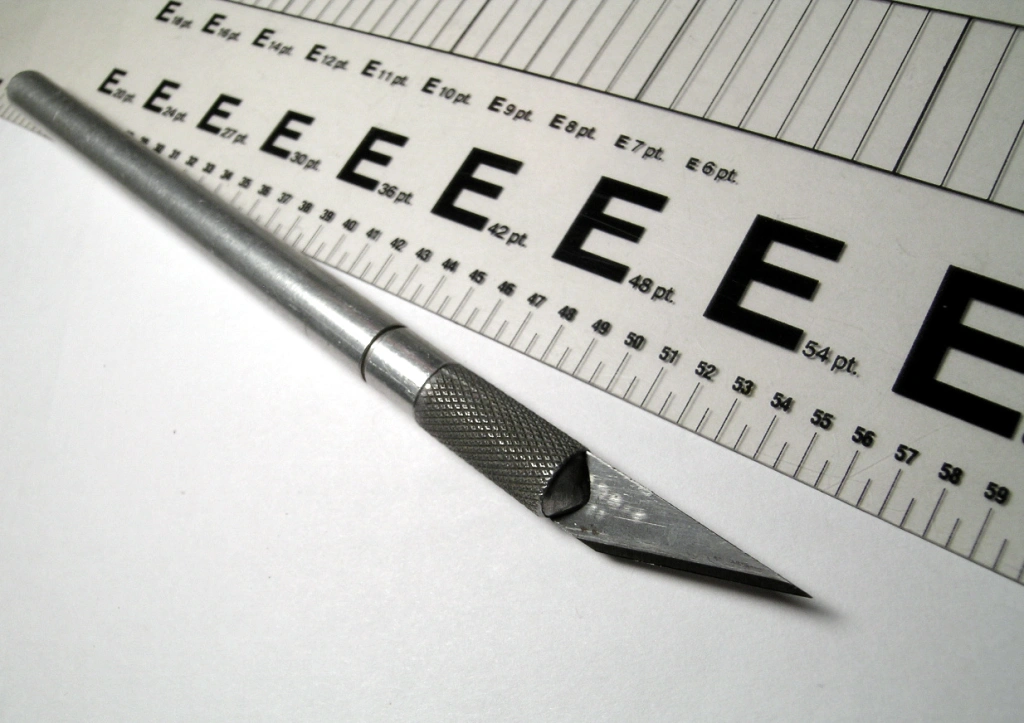A new class of visual creator arose alongside user-friendly desktop publishing for consumers. Apps now let you make your own nice layout without a thought to even basic concerns like margin width or type size. Great for writing the letters we used to type on a typewriter, with the ability to add things like color, an image or a special typeface.
Office apps magically “wizard” you through creating corresponding labels and envelopes. You can open a template with pre-formatted brochures and digital ads … a whole variety of marketing materials for which you once got a titled “commercial artist” at an advertising firm, back in the day. Print it at Office Depot, Staples or FedEx Kinko’s and you’re good to go!
Someone who is a bit visual and creative notices, of course, that you found a template with a pre-made layout, used clipart and printed it yourself. So the more creatively inclined might venture into Photoshop or InDesign to make something unique and special to bring to a real print shop. Everyone with a creative notion has become The Graphic Artist with no training or experience necessary.
Those poor printing reps. When I give them clean, professionally prepared files they are increasingly awestruck (and then a little teary-eyed), because someone knew how to produce something they can print. Day after day these valiant warriors battle for the ongoing relevance of classic offset printing, against legions of amateur “designers” with creations that in-house production staff must replicate in usable form. Try to tell a customer-artiste that they will need to either change their masterpiece, or pay for the time it will take to fix it. Hell hath no fury like the customer whose artistic notion hath been scorned.
I have something that might help, if we can pass it on to our clients. It’s a little-discussed assumption of how the brain works. Basic neurology states that a brain will seek novelty, and will tend to overlook what it’s seen before. Hence all media push the envelope of what’s considered “shocking.” Unfortunately, amateurs believe everything in their design has to be novel to get attention.
This is where you get today’s design cliché that something “POPS.” It gets attention by standing out against the backdrop of standards and assumptions your target audience ignores. But in order to pop, a chosen element must have something to stand out from. And here is the biggest secret amateurs and hacks fail to understand (shhhhh):

It can’t all pop.
Making all your type caps or bold or italic or bright red or yellow will not make it all pop! You have to choose and then pay attention to things like consistent margins, limited typeface varieties, and having your boxes line up. Your audience will be attracted to nothing in your work, if it’s just a random array of popping things vying for the brain’s attention.
Something has to be standard, in order for anything to stand out. (Think how an edgy, borderline vulgar TV show used to stand out, back when TV had standards.) That’s why professionals study classic rules – we learn the standards and try creative ways to break them for effect. Break all the rules all the time and the effect is just bad. Not just unattractive, but often not even usable.
Appreciate how actual designers take the time to study and practice industry standards, and how good design chooses what needs to “pop.” You don’t want the poorly printed, messy quality of your final product to be the thing that gets noticed!
Who knew there were rules to being unique. Let some brains chew on that one. 🙂
For an easy explanation of some of the math behind good design, check out this article about the Golden Ratio.


Leave a comment